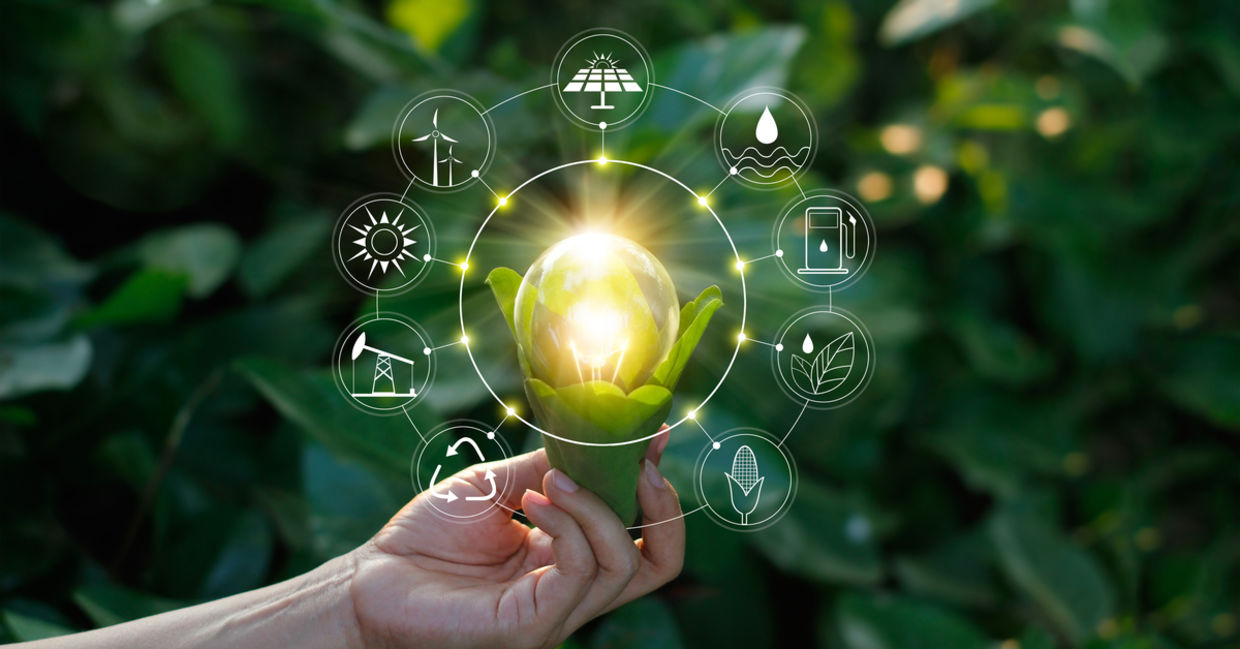Green Technology News: Innovations Shaping a Sustainable Future
The global shift towards sustainability has made green technology a focal point of innovation and investment. As the impacts of climate change become increasingly visible, both the public and private sectors are ramping up efforts to reduce carbon footprints, conserve resources, and promote eco-friendly practices. Green technology, often referred to as “clean tech,” encompasses a range of innovations aimed at fostering environmental sustainability. From renewable energy breakthroughs to waste reduction strategies, green technology is evolving at a rapid pace. This article delves into recent developments in this transformative field and explores how these innovations are contributing to a more sustainable future.

The Rise of Renewable Energy Technologies
Solar Power Advancements
Solar power continues to be a cornerstone of green technology, with advancements in photovoltaic (PV) efficiency driving the cost of solar energy down. Recent breakthroughs in perovskite solar cells have garnered attention for their potential to revolutionize the industry. These cells, composed of materials that are cheaper and more abundant than traditional silicon-based solar cells, offer higher efficiency and versatility in capturing sunlight. As research progresses, perovskite solar technology may lead to more affordable and efficient solar panels, accelerating global adoption.
Moreover, the development of solar energy storage solutions is a crucial complement to the growth of solar power. Companies are exploring innovative ways to store energy generated during daylight hours for use at night or during periods of low sunlight. This includes advancements in battery technology, such as lithium-sulfur batteries, which offer higher energy densities compared to conventional lithium-ion batteries.
Wind Energy Innovations
Wind power, another major player in the renewable energy sector, is also experiencing significant advancements. The development of floating offshore wind turbines, for instance, has opened new possibilities for harnessing wind energy in deeper waters where traditional turbines are impractical. These floating structures can be deployed in regions with stronger, more consistent winds, greatly increasing the potential for wind energy generation.
Additionally, new materials are being used to build more efficient and durable turbine blades. Lighter, stronger composite materials are enabling the construction of larger turbines that can capture more wind energy, thus improving overall output. These innovations are crucial as the demand for renewable energy sources continues to grow globally.
Energy Storage and Grid Management
Battery Technology Breakthroughs
The intermittent nature of renewable energy sources like wind and solar requires effective energy storage systems to ensure a stable energy supply. As a result, advancements in battery technology are critical to the future of green technology. Solid-state batteries, which use a solid electrolyte instead of a liquid one, are showing promise due to their higher energy density, faster charging times, and enhanced safety features.
Another promising innovation is the development of flow batteries, which store energy in liquid electrolytes. These batteries offer longer lifespans and are well-suited for large-scale energy storage, making them an attractive option for grid applications. As energy storage solutions improve, the reliability and scalability of renewable energy will increase, supporting the transition to a low-carbon economy.
Smart Grids and Decentralized Energy Systems
The traditional centralized energy grid is evolving to accommodate the growing influx of renewable energy sources. Smart grids, which use digital technology to monitor and manage energy distribution, are helping to optimize energy use and integrate renewables into the grid more effectively. These grids enable real-time communication between energy producers and consumers, allowing for more efficient energy management.
Decentralized energy systems, such as microgrids, are also gaining traction. Microgrids allow communities or businesses to generate and manage their own energy, often through a combination of solar panels, wind turbines, and battery storage. These systems provide greater resilience, particularly in areas prone to power outages or grid instability, and support a more sustainable energy ecosystem.
Green Transportation Solutions
Electric Vehicles (EVs) and Beyond
The electric vehicle (EV) market is booming, driven by advances in battery technology, increasing consumer demand, and supportive government policies. EVs are a critical component of the transition to sustainable transportation, as they produce zero tailpipe emissions and significantly reduce the reliance on fossil fuels. Recent innovations in EV battery technology, such as the development of solid-state batteries and ultra-fast charging capabilities, are making EVs more accessible and convenient for consumers.
However, green transportation is not limited to electric cars. Hydrogen fuel cell technology is gaining momentum, particularly in heavy-duty sectors such as trucking and aviation. Hydrogen-powered vehicles emit only water vapor as a byproduct, making them a promising alternative for industries that are harder to electrify.
Public Transit and Urban Mobility
In addition to personal vehicles, green technology is transforming public transportation systems. Cities around the world are adopting electric buses, trams, and trains to reduce air pollution and improve energy efficiency. Autonomous electric shuttles are also being tested in various urban areas, offering a glimpse into the future of sustainable, smart cities.
The concept of shared mobility is another trend reshaping urban transportation. Ride-sharing platforms and bike-sharing programs are helping to reduce the number of vehicles on the road, thereby cutting emissions and alleviating traffic congestion. As urban populations grow, these innovations will play an increasingly important role in reducing the environmental impact of transportation.
Circular Economy and Waste Reduction
Recycling and Reuse Innovations
The shift towards a circular economy—where waste is minimized, and resources are reused and recycled—remains a key focus of green technology. Companies are developing new methods for recycling materials that were previously considered difficult or impossible to recycle. For example, advances in chemical recycling are enabling the breakdown of complex plastics into their basic components, which can then be reused to produce new products.
Additionally, the rise of biodegradable materials is contributing to waste reduction efforts. Innovations in packaging, such as the use of plant-based or compostable materials, are helping to reduce the environmental impact of single-use plastics. These efforts are essential as the world grapples with the growing problem of plastic pollution.
Sustainable Agriculture and Food Systems
Green technology is also transforming the agriculture sector, with innovations designed to reduce the environmental impact of food production. Precision agriculture, which uses data-driven technologies to optimize farming practices, is helping to minimize the use of water, fertilizers, and pesticides. Vertical farming, which involves growing crops in controlled indoor environments, is another exciting development. This method reduces the need for arable land and water, while also cutting down on transportation emissions by bringing food production closer to urban centers.
Conclusion
Green technology is rapidly advancing, offering innovative solutions to some of the world’s most pressing environmental challenges. From renewable energy breakthroughs and efficient energy storage systems to sustainable transportation and waste reduction, these technologies are driving the transition to a greener, more sustainable future. As these innovations continue to evolve, they will play an increasingly vital role in mitigating climate change and promoting global sustainability. The future of green technology holds immense potential, and its continued development will be critical in shaping a more resilient and environmentally-conscious world.



